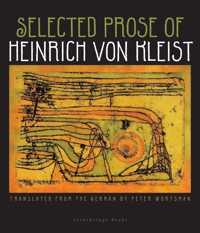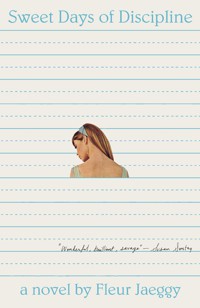
There is something particularly literary about obsession. After all, being inside a good book can feel like being tugged down a rabbit hole, without an end in sight. To read a novel is to absorb the thoughts of another, to limit your point of view to the pages in front of you—to see, in your mind’s eye, what is depicted or suggested but not literally there. Whether characters obsess over knowledge or love, self-glorification or self-abnegation, their single-minded focus draws us in with what James Baldwin called a “Niagara force,” hurtling us onward and downward until we reach the final sentence.
These eight books explore different dimensions of obsession: self-destructive single-mindedness, the pursuit of an idea whose bounds seem beyond rational explanation. They reveal obsession to be at once a perilous tic and a necessary tool for managing what could otherwise spin into chaos. Most of all, they show that without a bit of obsession, there would be no stories to tell.

Michael Kohlhaas, by Heinrich von Kleist (translated by Peter Wortsman)
A Romantic poet, dramatist, novelist, philosopher, and newspaperman, Kleist was beloved by modernist writers such as Franz Kafka and Robert Walser. His work is full of fatalistic paradoxes, harsh ironies, and fruitless attempts to make sense of an incoherent reality. The titular hero of his great novella is a horse trader who has two of his animals seized and mistreated by a corrupt nobleman. Kohlhaas requests payment to make up for their poor condition, but the nobleman refuses. So the horse trader escalates the situation. He files a suit, but he’s rebuffed. He attacks the nobleman’s castle and kills members of his household. He raises an army and marches on Wittenberg. With typical Kleistian irony, a petty theft has become a chaotic peasant rebellion. Yet isn’t Kohlhaas in the right? They did steal his horses, after all. It was “his sense of justice,” Kleist writes, that “turned him into a thief and a murderer.”

Zama, by Antonio di Benedetto (translated by Esther Allen)
The Argentine writer di Benedetto dedicates his first novel to “the victims of expectation” and then sets out to illustrate how a life lived only for the future is no life at all. It is the late 18th century, and the Spanish colonial official Don Diego de Zama wants only one thing: to be transferred from his isolated outpost in Paraguay to a new, more metropolitan life in a city. He never gets there, but this constant tension between stasis and yearning gives the writing its unique comic charge. In the manner of Kafka’s The Castle, we are treated to Zama’s lengthy interior monologues outlining his latest foolproof plan to be free of the colony. Yet no sooner does he take the first step to leave than the whole thing falls apart, again and again—a Sisyphean struggle that continues until the official is old and spent. At that point, di Benedetto’s comedy tips over into tragedy before crescendoing, in the final pages, into a heartbreaking vision of the human condition. However much I laugh at Don Diego, he moves me. In the extremity of his focus, his thwarted desire to complete just one single, simple task, he illustrates something very common, and very tragic.

The Face of Another, by Kobo Abe (translated by E. Dale Saunders)
The works of Abe are marked by frequent transformations: In one story, a man turns into a stick; in a novel, a private detective essentially becomes the man he’s searching for. Nothing is constant, and everything is in flux—one’s identity most of all. In The Face of Another, my favorite of Abe’s novels, Mr. Okuyama, a plastics scientist, is horrifically burned in an industrial accident that destroys his face. His colleagues avoid him, and his wife is repulsed by him, a sexual rejection that he experiences as the final annihilation of his old identity. So he sets to work building himself a new face, painstakingly assembling the materials, taking a new apartment, and testing the mask out across the city. When Mr. Okuyama wears it, he begins to act in surprising ways, as if his new face has come with a new identity—as if he were someone else altogether. Intoxicated by the possibilities of this face, Okuyama begins to live a parallel life and eventually decides to seduce his own wife, cuckolding, and thus supplanting, himself. But, the reader comes to wonder, can we really transform ourselves so easily? Or do others see far more of us than we see of ourselves?
[Read: A 19th-century bookseller’s obsession with a lost masterpiece]

Season of Migration to the North, by Tayeb Salih (translated by Denys Johnson-Davies)
In this novel by Salih, a Sudanese writer and broadcaster, a young man returns from an English university to his village on the Nile. He is a “traveled man” who has come back home full of knowledge and postcolonial self-confidence. Yet he is shaken when he meets Mustafa Sa’eed, who has followed a similar trajectory—from home to colonial metropole and back again—but doesn’t share his optimism. Mustafa’s time in England was disastrous: He remade himself to fit the ideals of English imperialism, a transformation that left him covered in spiritual scars and full of rage. He describes his life as a “lie” and decides to take his revenge on a series of English women, seducing, manipulating, and ultimately disregarding them, driving most to suicide. But in order to do so, he must diminish himself again, indulging their colonial fantasies (he invokes Othello several times) and shattering his own identity in the process. In destroying the women, he destroys himself. Although much more happens in this slim book, Mustafa’s story is a bright, burning coal that sets fire to the young man’s optimism, stranding him between tradition and modernity, confidence and despair.

In the Eye of the Wild, by Nastassja Martin (translated by Sophie R. Lewis)
In 2015, Martin, a French anthropologist. was attacked and nearly killed by a bear while conducting research in Russia’s Kamchatka Peninsula. This hallucinatory memoir, written in an insistent first person, begins at that violent moment and follows Martin through her surgery, recuperation, and attempt to understand who she has become. “It is hard to leave sense unmade,” she writes. “To decide: I do not know everything about this encounter.” Drawing upon her anthropological background and her friendships in Kamchatka, but also upon a new, indescribable feeling that she has been changed in some key way by her attack, Martin drills deeply down into her new state. In the language of the indigenous Even people, she has become medka: “she who lives between worlds,” “half human, half bear.” Although the obsessive narrator typically goes out in search of meaning, Martin’s status has, in a sense, been chosen by the bear who marked her. “Hybridization took place,” she writes, “and yet I am still myself.” She pulls from her research, her education, and her discipline, but her condition is ineluctable; there is no undoing what has been done. She has been marked by the bear, and that’s that.

Atmospheric Disturbances, by Rivka Galchen
In love, one’s sense of self is often defined by the object of one’s affection. And so we resist change, if only to preserve who we think we are. In Galchen’s debut novel, Dr. Leo Liebenstein comes home and discovers that his wife, Rema, has been replaced by an exact copy. This faux-Rema may act like the real thing in every respect, and she may swear up and down that she is his wife, but he somehow knows that it is not her. “It was just a feeling,” he declares. “That’s how I knew.” And so Leo embarks on an outrageous journey to Buenos Aires, and then to the far south of Patagonia, to discover what has happened to Rema. Of course, something has changed in their marriage—a slight chill, a greater distance—but Liebenstein refuses to accept something so common, and so devastating, as the idea that he and his wife might be drifting apart. Galchen mines this refusal for suspense, and then for comedy, without losing sight of the despair just beneath the surface. Her protagonist will insist on the most dramatic and fantastical possibilities—anything to ignore the possibility that his love might no longer love him.

Sweet Days of Discipline, by Fleur Jaeggy (translated by Tim Parks)
Obsession directs our attention: It causes us to focus on one person, one idea, one story, to the exclusion of all others—sometimes even to the exclusion of the object of our monomania. So it is in Sweet Days of Discipline, Jaeggy’s sublime coming-of-age novel. The unnamed narrator is studying at the Bausler Institut, a boarding school in the Swiss Appenzell. One day, a new girl named Frédérique arrives, her “hair straight and shiny as blades,” with “the kind of forehead that makes thought tangible.” The narrator is drawn to the girl’s intensity of focus, her affected handwriting, her willingness to be solitary. The novel is full of descriptions so exact that they feel lurid. Yet Frédérique remains always at a distance—and, as becomes clear late in the book, after our narrator bumps into her special friend on the streets of Paris after many years, the girl has kept her interior life entirely hidden. Their unexpected meeting reveals a madness that was always present but never noticed. After so much precise observation, we have seen nothing at all.
[Read: When daydreaming replaces real life]

The Longcut, by Emily Hall
Literature might be the best channel for exploring fixation, but artists in many mediums have plenty to obsess over—including, as with the main character in Hall’s debut novel, what their art even is. Hall’s narrator is a visual artist on her way to meet with a gallerist and explain what, exactly, her work constitutes. This is a tricky subject; as she says in the very first sentence, “I was always asking myself what my work was.” Constructed as a series of long, looping, digressive, self-referential sentences, Hall’s novel returns to this question again and again, hovering over the same details from different angles, repeating the same phrases but shifting the emphases. The struggle to articulate becomes the book’s main mode, illustrated by the way Hall’s sentences double back on themselves. But as the story rushes to a close, her narrator lands on something else entirely: negation. She will not reduce her art by pinning it down; she won’t even describe it. Hall’s narrator turns the impulse to use obsession as a means of discovery against itself. Instead, her sentences trail on and on to avoid having to come to any conclusion at all. “What was important,” she writes, “was to not find the right words.”
When you buy a book using a link on this page, we receive a commission. Thank you for supporting The Atlantic.







